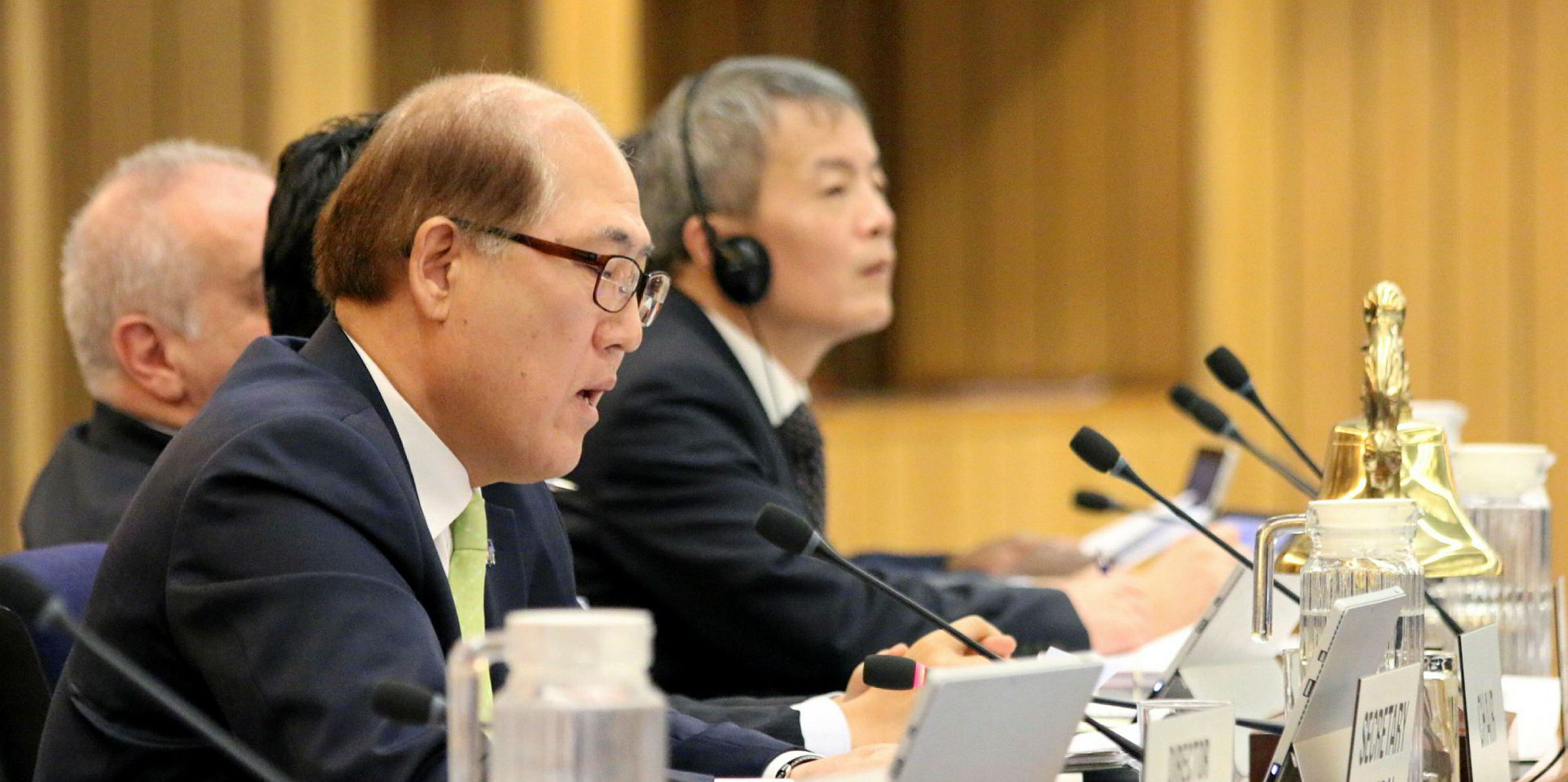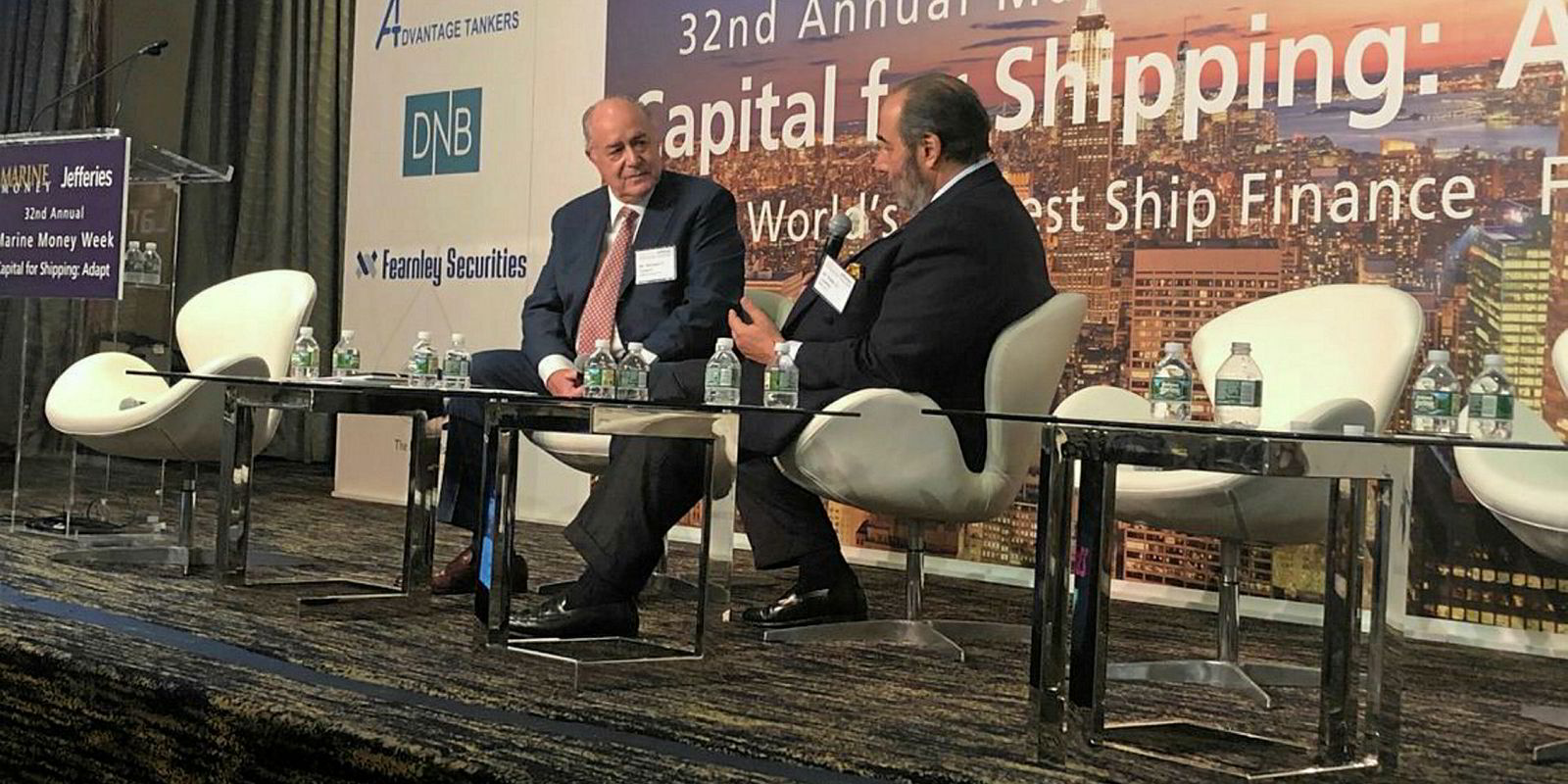Over the past few years, the world’s shipping industry has been focused on the implementation of the IMO-mandated global reduction in sulphur content of fuel oils from 3.5% to 0.5% by next January.
Looming far larger, is the developing IMO mandate to lower carbon dioxide emissions by 2050 to 50% of 2008 levels.
Poseidon Principles
Adding further pressure is the adoption of the Poseidon Principles by many of the leading global banks, which will have a profound effect on the shipping industry, impacting vessel life, financing and potentially worldwide trade.
With no new developing technology that looks likely to replace the diesel engine, meeting the IMO’s 2050 greenhouse gas (GHG) emission target appears to be a long way off.
This is an acute issue for LNG carriers.
Any vessel built today with an expected trading life of 30 years or more may face compliance issues with the future GHG emission targets. As a result, today’s new LNG carriers could face premature obsolescence.
With no new developing technology that looks likely to replace the diesel engine, meeting the IMO’s 2050 greenhouse gas (GHG) emission target appears to be a long way off. This is an acute issue for LNG carriers.
Plus, the Poseidon Principles bind signatory banks to eliminate financing on vessels that do not comply with the IMO 2050 guidelines.
IMO 2050
This is likely to put pressure on the length of loan terms available for LNG carrier owners. Poseidon was not just the god of the sea, but also of storms and earthquakes (notoriously bad-tempered to boot), an apt analogy for IMO 2050.
Today, most LNG carriers are depreciated over 35 to 40 years, but if they become obsolete in 2050 that sets their useful depreciation life.
Shorter depreciation periods and higher depreciation rates mean either earnings will fall or charter rates will rise to compensate. Residual values may come under downward pressure, and loan terms may begin to shorten.
Owners will also be reluctant to invest in new LNG vessels post 2025 if they foresee a “hard stop” and enforced obsolescence by 2050.
It is reasonably safe to assume that technical compliance with long-term GHG emission requirements will require a mix of advances in both technology and fuels.
As has been seen in the past, IMO targets have not always been achieved in the initial time frame. IMO 2020 was launched in 1997, taking some 20 years from concept to finalisation.
2050 GHG emission targets may be difficult to meet but pressure from the finance community is likely to cause shipowners to force equipment manufacturers, fuel suppliers and shipyards do all they can to come up with cleaner, more efficient ships to meet the challenge. The ability to progress towards those targets cannot be guaranteed.

The IMO approach is not making matters easier. To date, the principles laid out are vague and some places contradictory.
One standard of measurement, using carbon dioxide produced per ton-mile may adversely impact LNG carriers (and oil tankers) compared to other vessels as it accounts for ballast legs just as if they were laden legs (an issue recognised in the Poseidon Principles along with the contradictory measurement approach).
How the 2008 baseline might apply to LNG carrier remains an open question.
If the final regulations allow the industry to use a ton-mile standard, the rapid increase in ton-miles for LNG compared to other forms of shipping may not unduly penalise LNG carriers, while the shift in the world’s LNG fleet from steam turbines to MEGI/XDF propulsion over the last decade could be a very big step towards compliance.
2050 may feel like a lifetime away, and indeed for most vessels it is. But LNG carriers are not most vessels, and for our industry 2050 is beginning to look like tomorrow
Carbon dioxide emissions
But if the IMO imposes a cap on overall emissions by shipping segment, regardless of fleet growth, LNG could be a loser.
Meeting 2050 carbon dioxide emissions targets is the shared responsibility of shipowners and charterers.
As an initial step, both groups should begin to familiarise themselves with the issues, and become actively involved with the IMO in setting out the direction of the new regulations.
2050 may feel like a lifetime away, and indeed for most vessels it is. But LNG carriers are not most vessels, and for our industry 2050 is beginning to look like tomorrow.
As Benjamin Franklin famously remarked to his revolutionary colleagues during the War of Independence: “We must, indeed, all hang together or, most assuredly, we shall all hang separately.”
Poten & Partners, an energy and shipbrokerage





